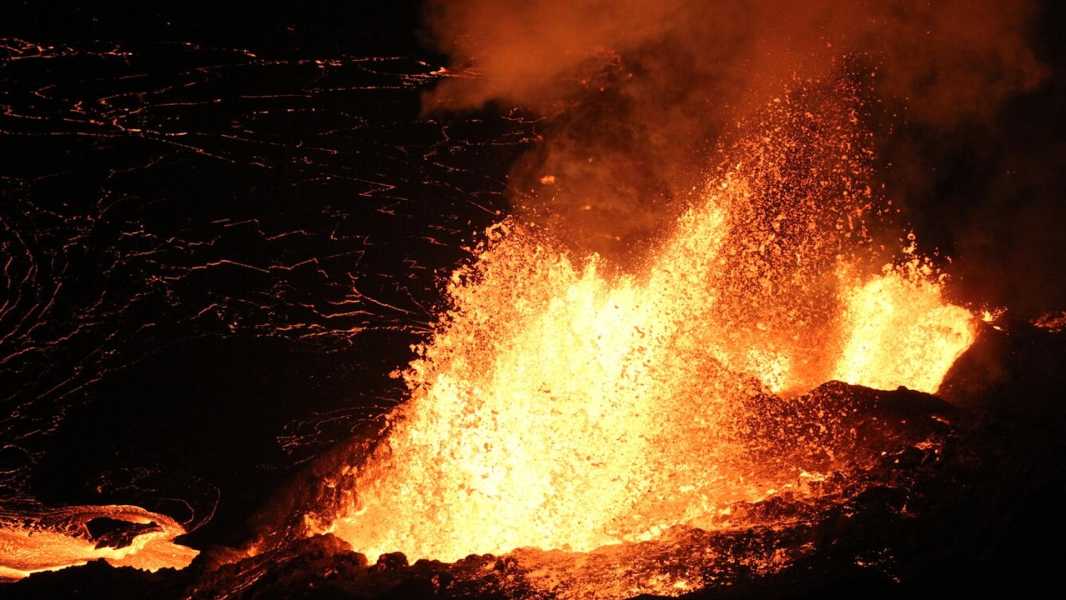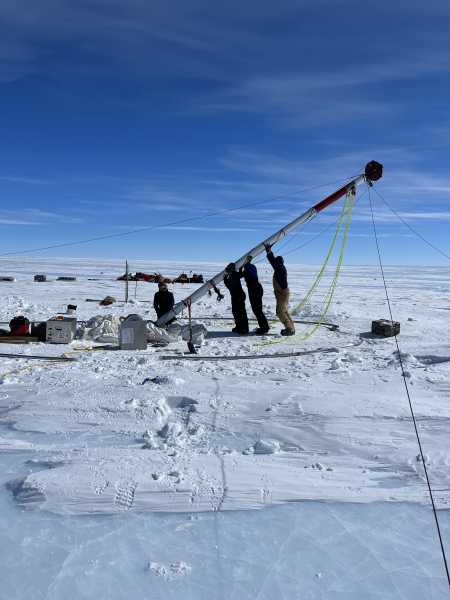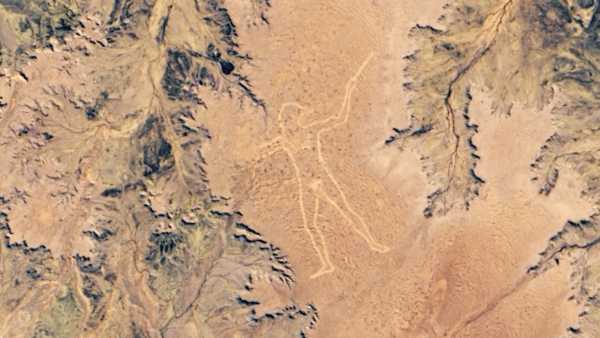
Kilauea volcano erupted more than 300 feet (100 meters) from its crater during its eruption on Tuesday (Feb. 11). (Photo by U.S. Geological Survey, H. Winslow)
The Kilauea volcano on Hawaii's Big Island erupted on Tuesday (Feb. 11) with a powerful fountain of lava that reached about 330 feet (100 meters) into the air – the height of a small skyscraper, the U.S. Geological Survey (USGS) said.
This rising lava fountain is part of an ongoing eruption that began Dec. 23, 2024. The volcano's latest activity is part of its ninth eruptive episode, which began when lava began pouring into the floor of Halemaumau Crater on Tuesday morning, according to the U.S. Geological Survey. A live stream of the eruption can be viewed on the U.S. Geological Survey's YouTube channel.
Kilauea is the youngest and most active volcano on the Big Island, which is also home to three other active volcanoes: Mauna Loa, Mauna Kea and Hualalai. About half an hour after the eruption began Tuesday, a tall fountain of lava erupted from the north vent of the summit caldera and continued to flow into the crater. As the episode progressed overnight, the lava fountains became shorter, averaging 160 to 200 feet (50 to 60 m) in height.
While these lava fountains are impressive, they are not the tallest on Kilauea. In 1959, the volcano emitted a “threatening and terrifying” fountain of lava 1,900 feet (580 m) above its vent, according to the USGS. However, even Tuesday's eruption posed problems for USGS equipment.
“The high fountains resulting from the latest eruption episode could threaten the chambers, which could begin to deform and melt if erupting lava flows reach high enough to approach them,” the USGS said.
The ninth episode lasted 22.5 hours and ended on Wednesday (Feb. 12). Previous eruptions have ranged from 13 hours to eight days, with intervals between episodes ranging from 16 hours to 12 days. These episodic eruptions are occurring within the closed area of Hawaii Volcanoes National Park.
“Current hazards include volcanic gas emissions and windblown volcanic glass (Pele’s Hair) that could impact Hawaii Volcanoes National Park and nearby communities,” the U.S. Geological Survey warned. Pele’s Hair, named after the Hawaiian goddess of fire and volcanoes, forms when gas bubbles on the surface of lava burst, stretching the bubbles into long, sharp strands of glass as they cool. These strands of glass could end up in drinking water on farms or in people’s personal rainwater collection systems.
Sourse: www.livescience.com





